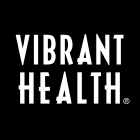
You Are Complex: Meet Karen Fabian, Founder of Bare Bones Yoga, Yoga Teacher & Certified Personal Trainer
Here at Vibrant Health, we believe health is an inside job, unique to you. After all, you‚re one-of-a-kind and your needs are complex ‚ that‚s why your supplements should be too.
To celebrate all of the beautiful complexities of our lives, each month we‚ve been highlighting individuals in our community ‚ taking a peek into the behind-the-scenes of their work life, wellness rituals and all the wonderful things that make them who they are.
This month, we got to chat with Karen Fabian, Founder of Bare Bones Yoga, Yoga Teacher, and Certified Personal Trainer. She lives in Boston with her eight-month-old rescue pup Coco, and is passionate about health, wellness, neuroscience and of course anatomy.
While she has many passions and talents, Karen‚s number one mission is to help yoga teachers understand anatomy so they can share it with confidence in their cues, sequences and conversations they have with students. She does this through her signature Blueprint Learning Program, where she works with yoga instructors virtually on an international level.
In this insightful interview, we got to chat with Karen about her weekly podcast, how she continuously invests in her health, and what the heck a foam-roller does for your body anyway. We hope you enjoy our series‚and remember, keep being you!
 |
How would you describe yourself in three words?
Healthy, Optimistic, Driven
What‚s a day in the life as a yoga teacher and educator look like?
Well, I will say since Covid the days look very different. Prior to Coid, I had a lot on my schedule that involved teaching people in real life and studios. Unfortunately since Covid, both studios I taught at closed permanently; the financial aspect of the pandemic was more than they could bear. |
Since Covid, I continue to support all the teachers in my Blueprint Learning Program and those teachers are all over the world, so it requires that I do coaching calls with them in all different time zones. I love doing that and it's the mainstay of my focus as a teacher and educator. And I now have a home-based yoga studio in the house that I can use for yoga. It‚s small; it fits four people but it‚s a brand new room with a hardwood floor and very appropriate for yoga practice so I've begun to see a small group of women in my home who come once a week.
I also generate a number of free resources for teachers including my Podcast, where I interview people not only in yoga but also people in the wellness industry, making videos for my Youtube channel, and hosting paid and free workshops online. On top of that, I do a tremendous amount of self-study in entrepreneurship and I‚m always keeping up with education as a personal trainer and a yoga teacher.
How did you first discover yoga, and how long have you been teaching?
My first yoga class was in 1999 and the following year I went to my first Teacher Training because I knew right away this was something that really spoke to me in terms of my own body and being able to help people with this modality.
I've been a longtime teacher...and I‚ve been in Boston just as long. I would say in terms of what compelled me to go to my first yoga class was an interest in doing something different than running and going to the gym, which can often be a catalyst for someone to take their first yoga class.
I have a background in physical therapy; I thought that‚s what I wanted to do but then thought, "I really want to work with the whole body." So I switched to the rehab counseling program from Boston University and went on to work in different clinical settings as part of the rehab team. My intro to health and wellness was in a clinical setting; that informs me not only in my teaching anatomy but also in all my interactions I have with students.
You've published several books and also launched a podcast! Tell us a bit more about those resources. What can viewers and readers expect to find?
I wrote my first book called Stretched for yoga teachers because I had gone through a lot of ups and downs as an independent teacher; I built up debt, I was running around teaching all sorts of classes, and it really took me a number of years to get to the point where things were somewhat stable. I had learned so many lessons I wanted to share with other teachers like me who were looking to transition from corporate to a full time teaching career. My first book includes lessons I had learned, spreadsheets to track revenue, ways to come up with a business plan, and ways to find or create your own teaching opportunities.
And then as the years went on I really enjoyed the process of self-publishing and so I wrote a second book Structure & Spirit. By that point I was very much specialized in teaching teachers anatomy so it‚s really focused on yoga teachers and helping them share anatomy with different techniques. As many people can relate, sometimes when you practice yoga you have a funny feeling in your hip or shoulder and you ask the teacher what might that be about, or some tightness in your shoulder, and you ask what kinds of poses can I do? All the answers to that live within the anatomy.
As for my podcast, I recorded almost 200 episodes over the past two years! Listeners can expect a weekly episode from me and it has been so much fun to use that platform to share information, build a community and direct teachers to different supports that I offer.
You're super passionate about anatomy of the body. What's one fun fact you want our readers to know when it comes to anatomy?
One fun fact I would want people to know is what‚s really happening when you use a foam roller or buy one of those massage balls in a health food store. This is something that‚s not really common knowledge, however these tools are very commonly used.
So when we look at how the body is structured, there are bones and muscles and tendons and ligaments and cartilage. There‚s also a covering and a part of the body that goes in between everything and that‚s called fascia. Fascia is a connective tissue structure but it kind of reminds me of a spider man suit; if you imagine a spider man suit underneath your skin and running in between all your organs and bones and muscles that‚s what fascia is. In order to stay healthy and movable. you need to keep it healthy.
I think of it like a lasagna; there are layers and you don't want the layers to stick together...you want everything to flow freely. That‚s a very good metaphor to use when you think about the body. You need to have good movability between the layers! And techniques like foam rolling or going for a massage are designed to manipulate those layers and create better movability between them.
That's a very superficial understanding but that‚s enough to give people some talking points! And don't roll fast, roll slow...and when you feel an area where you get a lot of feedback like a "knot," stay on that spot as long as you can tolerate it, take deep breaths and hold it for about 30 seconds. Most people use foam rollers way too fast!
What's your favorite healthy snack to enjoy when you're busy teaching?
Apple slices with almond butter or hazelnut butter; I love that!
Do you have any go-to wellness routines or self-care tools you can't live without?
Definitely my foam roller and my myofascial release (MFR) balls! My other go-to is my journal for writing down different things and hands down podcasts!
Some of my absolute favorite podcasts in the wellness space are the Huberman Lab podcast with Dr. Andrew Huberman, who‚s a neurologist and opthamologist at Stamford, the Rich Roll podcast, and the Gabby Reece podcast (who was a professional volleyball player). I also have a business mentor James Wedmore and his podcast the Mind Your Business Podcast is unbelievable for tips and techniques not only for entrepreneurship but also mindset ‚î because mindset is such a big component when you work for yourself.
What does healthy living look like for you, and how do you invest in your health?
One of the biggest things I do to invest in my health is to get regular checkups; as you get older (I'm 56), it becomes critical that you not only do the regular stuff but also the follow ups - the colonoscopies, the mammographies, and even the eye exams. During Covid, that was a challenge for folks to get to these appointments so if you've fallen off track, get back on track. Prevention is one of the best things!
Some other things I'd like to do more regularly is daily meditation, daily journaling, and integrating deep breathing throughout my day. Sleep is super important, though I have not mastered the art of leaving my phone out of the bedroom but I'm really working toward it. And another big pillar for me is friendship and communication with people who I love and having interactions throughout the day even if it‚s people you run into at the grocery store or going out for coffee or breakfast. This has been shown to have a positive effect on overall health.
I run five to six days a week, practice yoga two to three days a week, do resistance training, eat healthy food, and take my supplements. I‚ve also been loving Yoga Nidra; if you're not familiar with it, it‚s basically like a wake sleep where someone is guiding you through a guided meditation but it‚s more somatic and more about the body than just the mind; it can be deeply relaxing.
Thank you for being a part of our community! Want to be featured on our Vibrant Health blog? Send an email to Ashley at aaudet@vibranthealth.com



